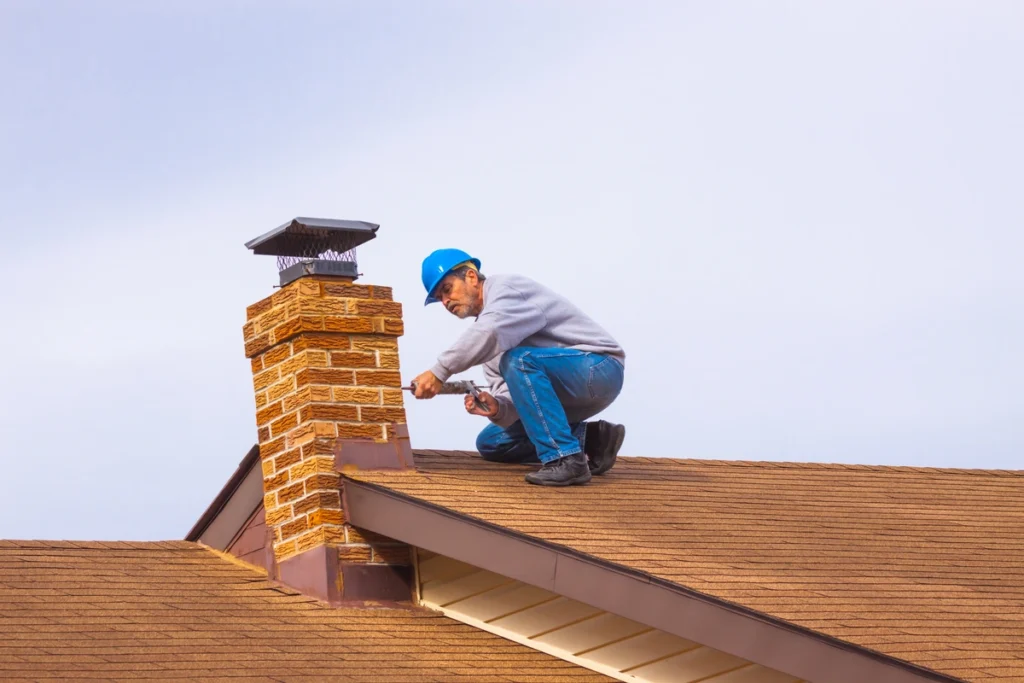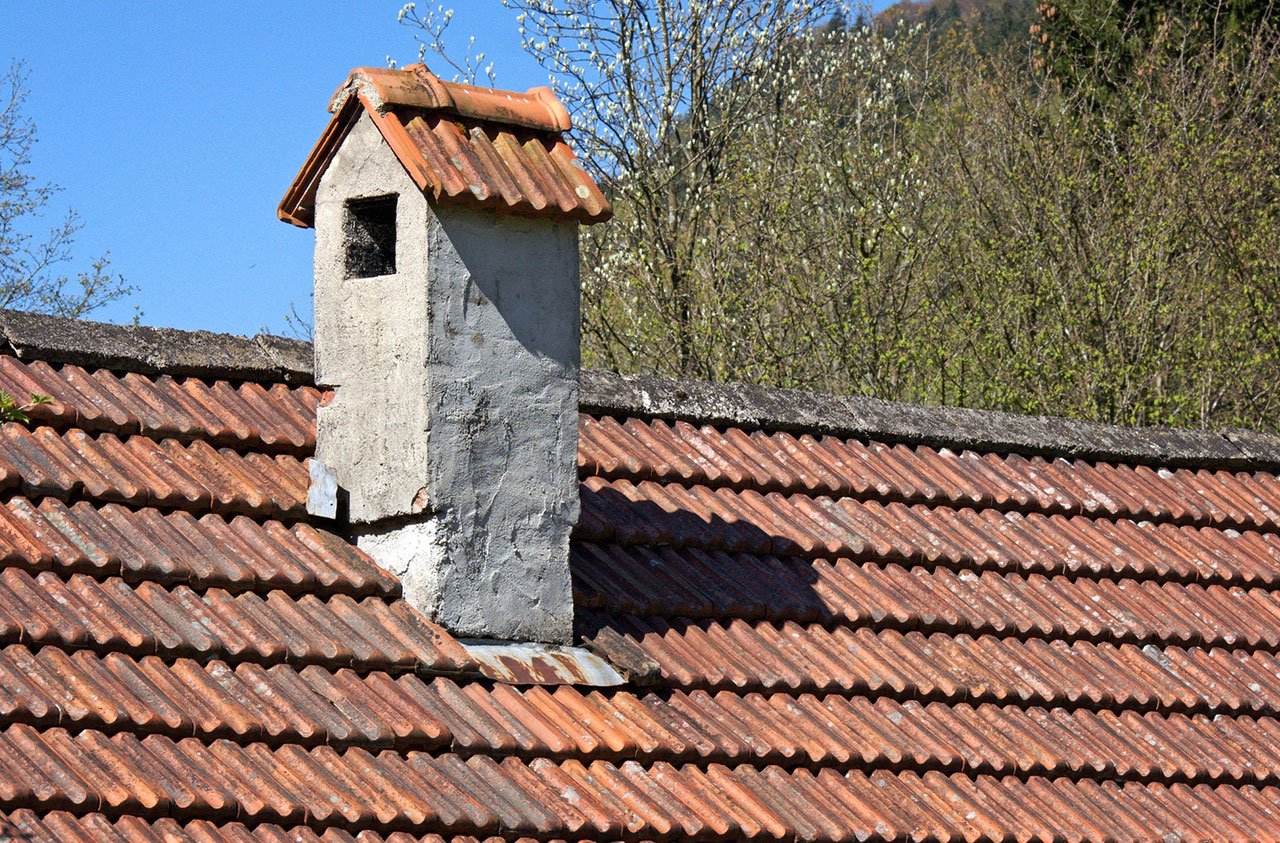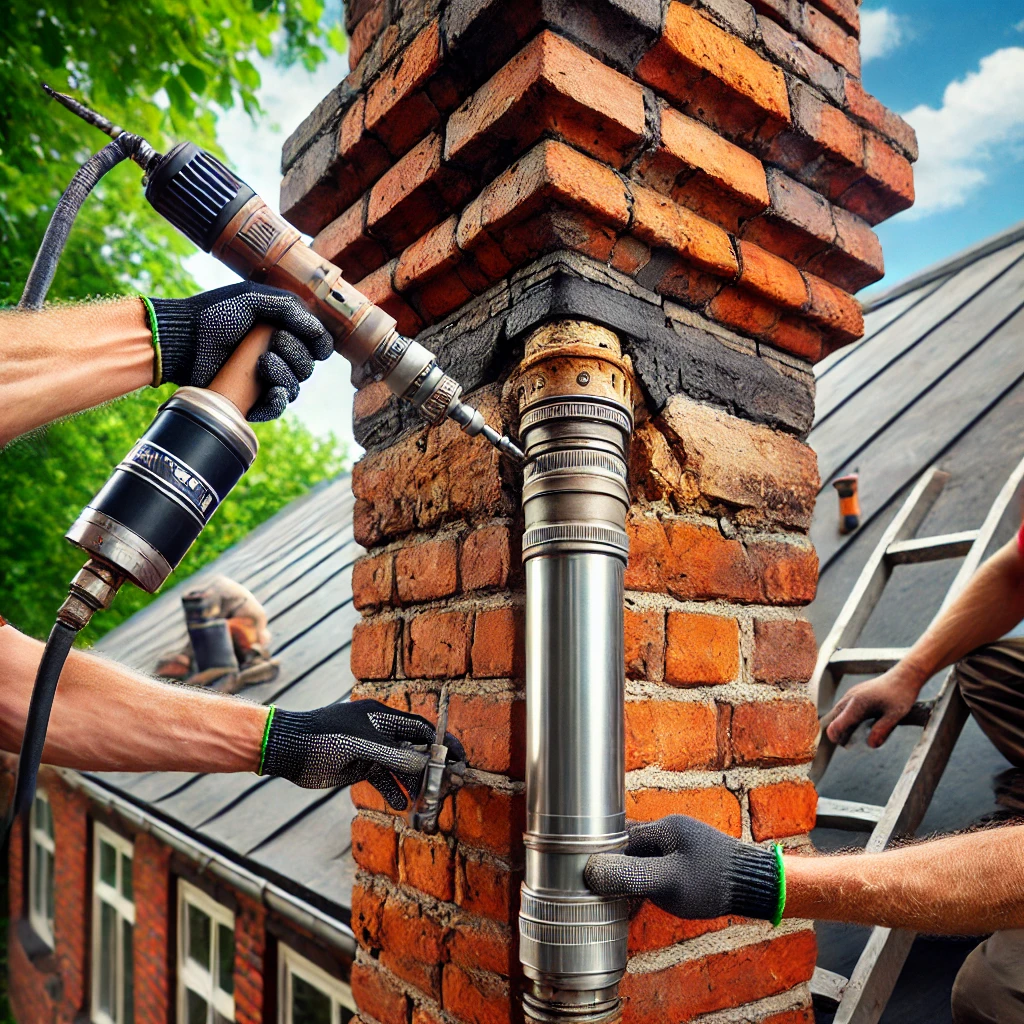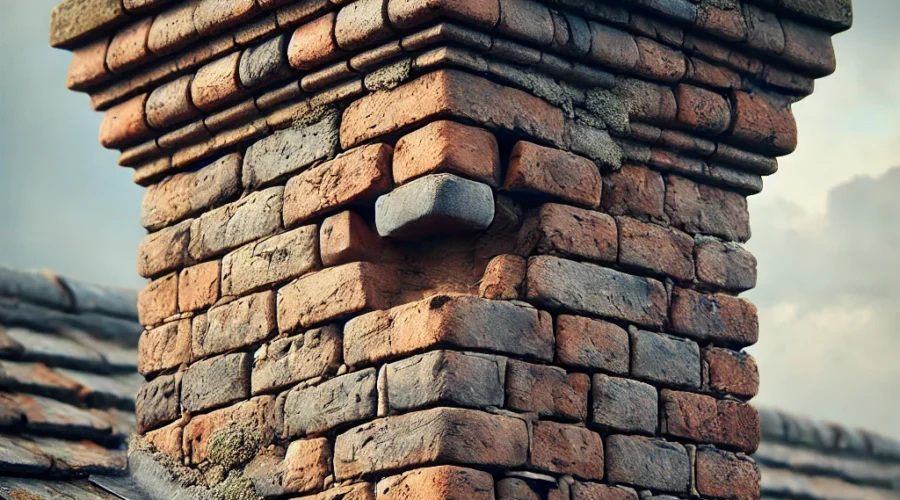Structural Issues in Old Chimneys Built with Outdated Materials: Safety & Solutions
We all admire the charm of old chimneys. They stand tall as pieces of architectural history. Yet, behind their nostalgic look, these structures often hide serious problems. Many of these structural issues arise from outdated materials. As the years go by, wear and tear take their toll. This can turn old chimneys into safety hazards that need our attention.
In this text, we’ll look at the common structural problems in old chimneys. We’ll also explore how outdated materials speed up their decay. From crumbling mortar to weakened bricks, understanding these issues is key for homeowners. It helps us keep our properties safe and sound. Let’s explore the challenges and solutions that can help keep these important features safe and strong.

A Guide to Old Chimney Construction: What Homeowners Need to Know
Old chimneys, especially those built with historical chimney materials, have their unique charm. But, they also come with their share of quirky challenges. The bricks and mortar in aging chimneys can start to crumble and wear down. This damage raises safety concerns.
Key Features of Old Chimneys:
- Brittle Construction: Many old chimneys used materials that wore down over time. Brittle construction can lead to cracks and instability.
- Outdated Designs: Designs didn’t account for modern safety standards. Retrofitting is often needed.
- Degraded Materials: As time ticks on, materials like lime mortar become less stable.
- Unseen Damage: Many issues aren’t visible at a glance. Regular inspections are crucial.
- Structural Reinforcement Needs: Ensuring stability might require structural reinforcement for chimneys.
- Humorous Reminder: if your chimney leans more than you do after a holiday dinner, it’s time to restore it. Old chimneys need extra care to stay strong and safe. Let’s keep it straight and sturdy!
For the love of old architecture, don’t attempt DIY old chimney repair. Instead, reach out to professionals for a consultation. Ensure safety and style coexist.
Explore further into chimney safely practices through sources such as National Fire Protection Association (NFPA) or Chimney Safety Institute of America (CSIA).
Common Structural Issues
Old chimneys often face structural issues due to outdated materials and construction methods. Understanding these problems helps in addressing safety concerns effectively.
Cracking and Deterioration
Cracking and deterioration appear commonly in chimneys built with historical materials. Over time, the bricks and mortar, due to their brittleness, begin to crack and crumble. These issues compromise the chimney’s structural integrity, leading to safety risks.
- Vertical and horizontal cracks weaken chimney stability.
- Spalling bricks detach and fall, posing threats to those below.
- Eroded mortar joints leave gaps, allowing water penetration.
To keep your chimney strong and safe, reach out to professionals like us. We specialize in restoring old chimneys, ensuring they stand sturdy for years to come.
Moisture Damage
Moisture damage presents a frequent problem in chimneys with degraded materials. Water infiltration can spell disaster, especially in humid climates.
- Efflorescence—white stains on bricks—shows rising damp issues.
- Freeze-thaw cycles expand moisture in winter, cracking bricks.
- Rusty metal components indicate water access, speeding decay.
These issues demand immediate attention to prevent further deterioration. Reach out to professionals for a consultation to explore chimney retrofitting options with you. This can help protect your chimney from moisture damage.
Stability Concerns
Stability concerns in aging chimneys result from outdated construction and material fatigue. Leaning or tilting indicates significant risks.
- Leaning chimneys can collapse if left unrepaired.
- Loose flashing allows elements inside, destabilizing the structure.
- Poor footing contributes to shifting and tilting.
For those celebrating, a leaning chimney should give way before you do! If you see any signs of instability, it’s time to consider chimney rebuilding. Sometimes, a chimney also needs structural reinforcement to stay safe and sturdy. Seeking professional help ensures safety and stability in your home.
Outdated Materials and Their Challenges
Old chimneys have a historical charm that we all love. But they come with many challenges. The materials used in older chimneys are often outdated. These outdated materials can cause structural issues. They can also lead to safety concerns as the chimney ages. Let’s investigate into specific challenges.
Brick and Mortar Limitations
Bricks and mortar from past eras aren’t as sturdy as modern options. Here’s a simpler rewrite:
In humid climate, we often face problems like brittleness, crumbling, and moisture damage. These issues are common and can affect many of us. Brittle bricks can crack and become unstable. Old mortar often wears down faster than the bricks. This can lead to gaps and weaken the structure. Advanced moisture invasion accelerates decay, causing noticeable mortar loss.
Calling a professional for the restoration of old chimneys becomes crucial. We offer solutions like chimney retrofitting and structural reinforcement for chimneys. To address these problems, reach out to professionals for a consultation.
Flue Liner Problems
Flue liners, key for guiding smoke out, often degrade, crack, or erode in older chimneys. Cracking: Brittle flue liners can crack under stress, affecting function. Deterioration: Degraded chimney materials may allow toxic gases to leak indoors. These issues demand attention, as they lead to serious safety hazards.
Signs of Structural Damage
Old chimneys often have structural damage. This happens because they’re made with outdated materials or have brittle construction. Spotting these problems early can prevent bigger issues later. It also helps keep your chimney a charming part of your home.
Visible Cracks and Spalling
Cracks might appear in the masonry, signaling structural chimney issues. Spalling is when the surface of bricks starts to chip or crumble. It often shows up along with cracks. This happens because the chimney materials have weakened. Freezing and thawing cycles make it worse. Here’s our advice: if your chimney bricks look like they’ve been through a blender, reach out to professionals for a consultation before things get out of hand!
Leaks and Dampness
Dampness in a chimney isn’t just about bad weather. Leaks can result from poor joint sealing or chimney caps failing. These issues often lead to mold growth and further degrade historical chimney materials. In winter climates, a damp chimney spells trouble. For help, reach out to professionals like us. We can make sure your chimney is thoroughly checked and secure.
Inspection and Maintenance Tips
Regular inspections keep old chimneys safe and charming. Over time, old chimney materials and construction can cause problems. This can affect the structure and create safety risks. We should make it a priority to have professionals evaluate older chimneys. This will help spot cracks and damage before they get worse.
Key Inspection Tips
- Check for Cracks: Large and small cracks signal structural issues and weakened bricks.
- Inspect Mortar Joints: Crumbling mortar affects stability. Mortar often wears out faster than bricks.
- Look for Leaning: A crooked chimney isn’t just a quirky charm—it’s a red flag for reinforcement.
- Moisture Control: A humid climate requires vigilance. Moisture causes efflorescence and weakens mortar.
- Flue Liners: Cracked liners compromise safety. Testing ensures smoke and gases exit quickly.
- Cap and Flash: Ensure the cap and flashing are intact to prevent leaks and dampness.

Call Us
For safety, reach out to professionals. We advise against DIY repairs—trust us, it’s best left to professionals.
Old chimney repair and chimney retrofitting require expert attention. This helps ensure the chimney stays stable and keeps its charm. Proper care will make sure the work lasts. It’s important to trust specialists who know how to handle these tasks. We make sure our maintenance preserves your home’s history while meeting modern standards.
Modern Solutions for Repair

Addressing structural chimney issues from outdated materials requires innovative approaches. When repairing an old chimney, it’s important to choose methods that are both durable and respectful of its historical look. This way, the chimney will last while keeping its original charm. Our modern solutions offer both.
- Chimney Retrofitting: We use advanced techniques to reinforce brittle chimney construction. Updated materials replace the degraded elements, ensuring safety without compromising charm.
- Structural Reinforcement for Chimneys: For chimneys showing significant tilt, rebuilding may be necessary. Specialized materials fortify the structure, preserving its historical integrity.
- Moisture Defense: In humid climate, moisture control is vital. Sealants and waterproof coatings help prevent further damage from water intrusion.
- Safety Upgrades: Adding stainless steel flue liners and caps enhances safety. These modern additions protect against common risks, like blockages and fire hazards.
We recommend consulting professionals instead of attempting DIY repairs. Safety concerns in aging chimneys demand expert attention. Reach out to professionals for a consultation.
Preserving the Charm and Safety of Old Chimneys
Old chimneys have a lot of history, but they need careful attention to stay safe and work properly. We should prioritize regular inspections and professional checkups. This will help us find any issues from old materials. It will also catch problems caused by outdated construction methods. By using modern restoration methods, we can keep their charm. At the same time, we can make them safer and more durable. Let’s make sure our chimneys stay strong, serving both as a reminder of the past and a safe part of our homes.
Frequently Asked Questions
Why are old chimneys considered charming and historically significant?
Old chimneys bring a unique charm to a home. They also give a glimpse into the past. Often, they are made with traditional designs and materials. These chimneys highlight the craftsmanship of earlier times. They can also become a focal point in the home’s design. They reflect architectural history and cultural heritage.
What are the main safety hazards associated with old chimneys?
Old chimneys can be dangerous. Crumbling mortar and weakened bricks are common problems. These issues can make the chimney unsafe. Many older chimneys have outdated designs. These designs no longer meet modern safety standards. You might notice signs like leaning or tilting. Moisture damage, such as efflorescence, can also occur. Freeze-thaw cycles can make things worse. These all point to serious safety risks. Ensuring stability through inspections and professional repair is crucial.
How can homeowners identify structural issues with their chimneys?
As homeowners, we should watch for visible signs like cracked bricks, crumbling mortar, or a leaning structure. Regular inspections by professionals can help spot less obvious problems. These include flue liner erosion or hidden moisture damage. Consulting experts ensures a thorough assessment of potential risks.
What role does climate play in the degradation of old chimneys?
In humid climates, moisture speeds up the damage to old chimneys. It makes bricks and mortar weak and unstable. This can lead to cracks and crumbling, especially during freeze-thaw cycles. Controlling moisture is key to keeping these chimneys safe and strong.
Why is professional restoration preferred over DIY chimney repairs?
Professional restoration ensures repairs are done safely and meet current standards. Experts use special techniques and materials to fix structural problems. DIY repairs might miss important issues. This can create safety risks without the right skills and tools.
What modern solutions are available for repairing old chimneys?
Modern solutions include retrofitting chimneys and using stronger materials for reinforcement. Innovations in moisture control also play a role. Stainless steel flue liners and caps improve safety. These methods keep the historic look while boosting durability. It’s important to consult professionals for the best repair strategies.
How important are regular chimney inspections?
Regular inspections are important. They help find damage that isn’t visible. This ensures the chimney stays strong. Inspections catch problems early. This can save you from expensive repairs. They also protect you from safety risks. A professional evaluation gives expert advice. It helps you keep your chimney working well and looking good.
Can outdated chimney materials be replaced to improve safety?
Replacing old materials with stronger, modern alternatives makes your home safer. For example, replacing old mortar with high-strength versions can reduce risks. Installing stainless steel flue liners also adds safety. It’s a good idea to consult professionals for these upgrades. They can help choose the right materials for lasting results.
What steps should homeowners take to maintain old chimneys?
You should schedule regular chimney inspections. If you spot any issues, address them right away. For repairs, consult a professional. Stay informed about safety standards from trusted sources like NFPA and CSIA. This will help you maintain your chimney safely. It will also keep your chimney a charming and functional part of your home.

